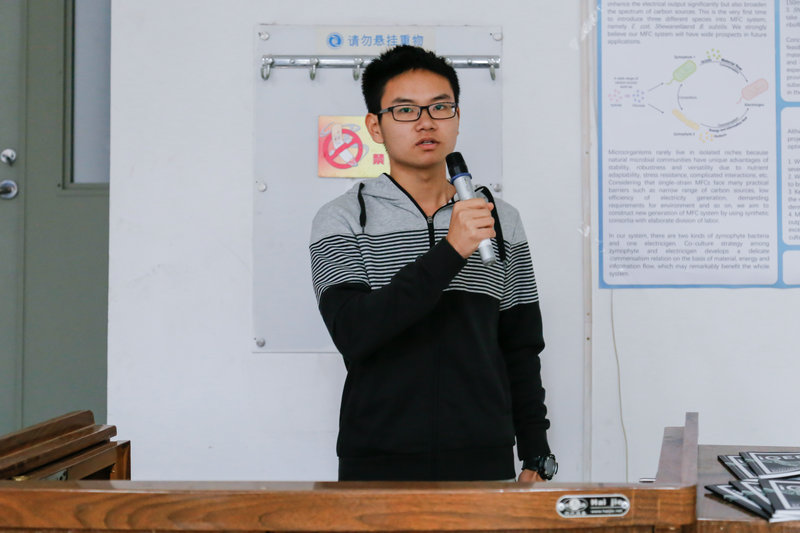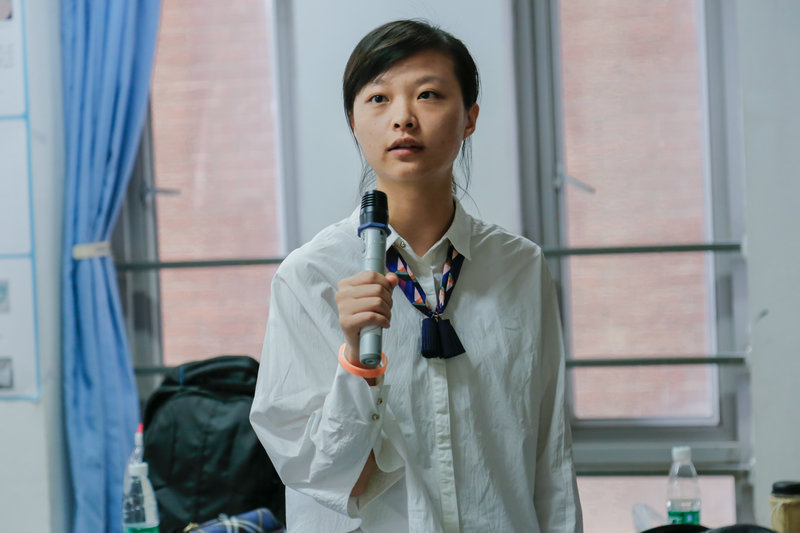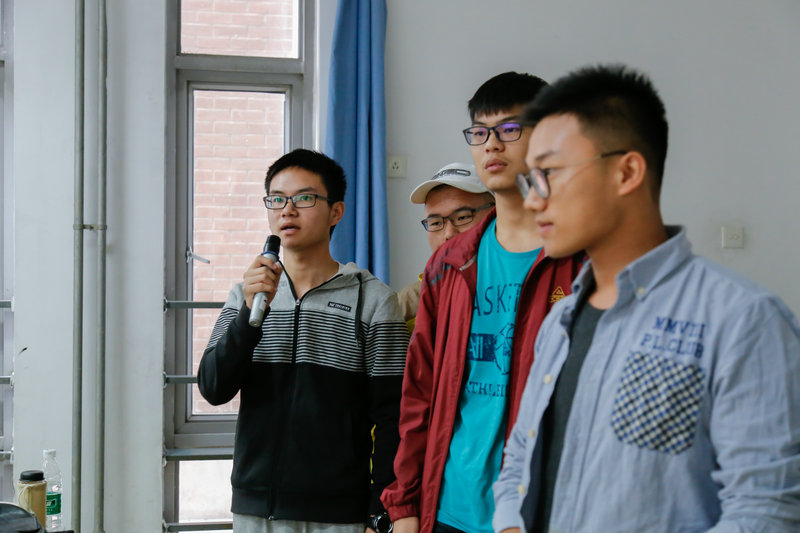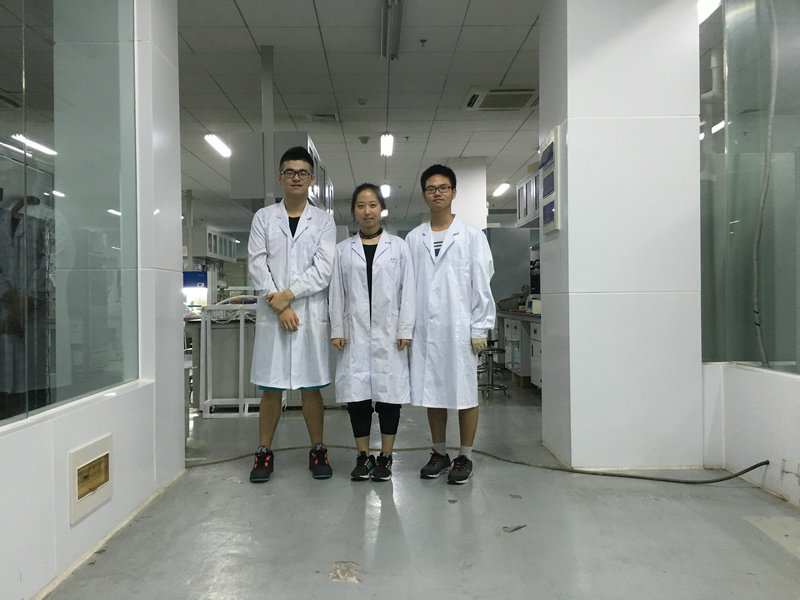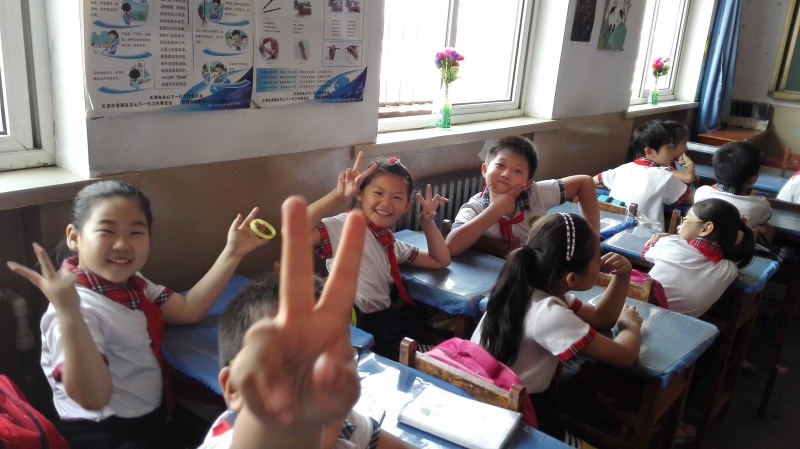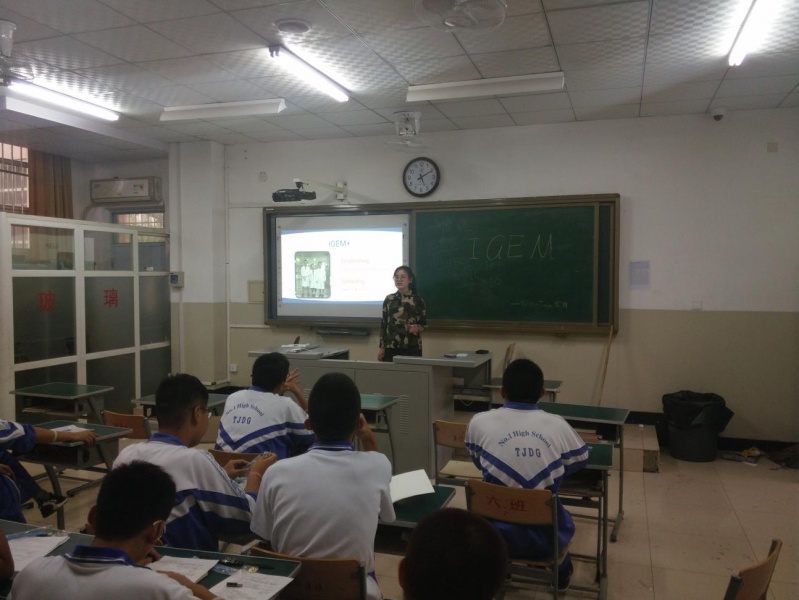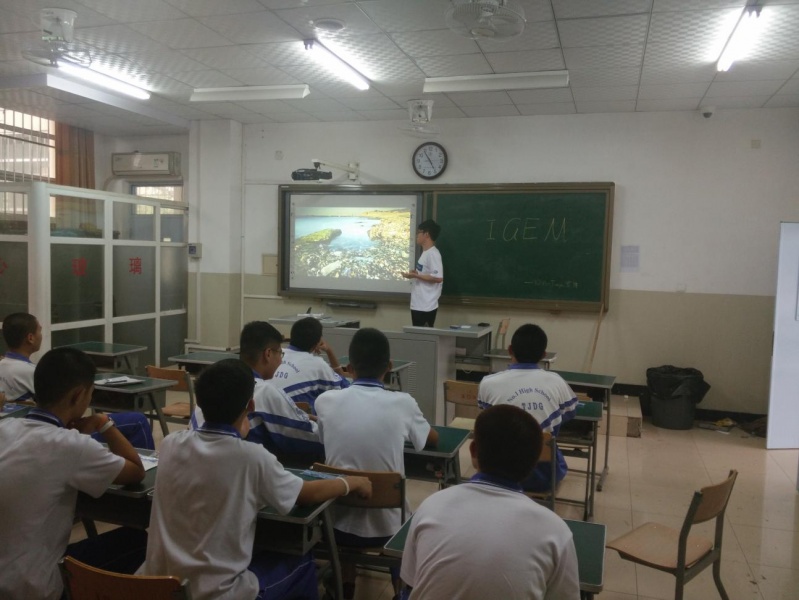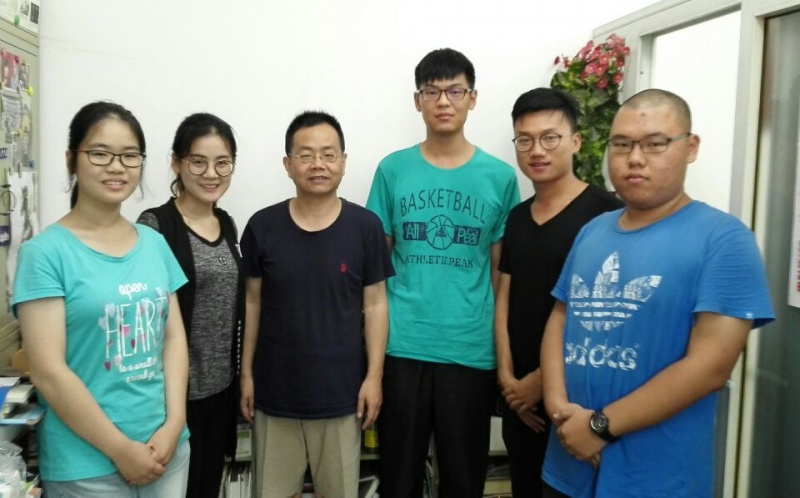<!DOCTYPE html>
OUR LECTURE IN TUST
Tianjin University of Science and Technology is a key university in Tianjin, China, which is famous for its excellent fermentation engineering and food engineering subject. Some years ago, some professors and students of TUST decided to set up a iGEM team and participate in the iGEM competition in the future. This summer, a sophomore student and a graduate student from TUST came to Tianjin University and study the basic knowledge about iGEM and synthetic biology and help our experiments in protein modification part. They told us about the enormous difficulty they are facing in team establishing process and we shared our experience and gave several suggestions to them. Before they leaved us, they invited us to give a speech in their school after summer vacation. On September 27th, five members of our team went to Teda campus of TUST and gave a speech about how to set up a iGEM team and what could a iGEMer receive from this competition. Almost all the seats were occupied by listeners. Since the iGEM competition is almost a band new term for most students in TUST, many of them showed great interests and talk with us enthusiastically. We gave them a plenty of suggestions according to the experience of our project, and offered encouragement to the students there. We continued our communication online by using a popular Chinese social network Wechat. They will recruit members this semester and decided to register a team next year.
A Meeting In Dagang No.1 Middle School
At about 10:30am on Sep. 18th, we departed for Dagang No.1 Middle School. At about 11:00 am, we met Teacher Xinrong Zhou and introduced iGEM and our project this year briefly to her. She showed great interest and claimed that knowledge in books is traditional and out of date, iGEM could make students get in touch with the cutting-edge knowledge of synthetic biology. In the afternoon, we gave a lecture to students about iGEM and synthetic biology. They asked questions with great enthusiasm and felt curious about the knowledge out of books. Although the speech was over till 5:30 pm, some students were still asking about synthetic biology and the procedures for the enrollment to iGEM teams. We are very delighted to bring students some new knowledge and meanwhile we invited them to visit our laboratory and conduct some experiments.
OUR VISIT TO Nankai University
We visited professor Cunjiang Song in Nankai University. We asked some questions and acquired the strains and plasimds we needed from him. We needed the strain pseudomonas putida KT2440, however, we lacked the related protocol for it. Then we found that professor Cunjiang Song had had a in-depth knowledge about it. After the corresponance, Song agreed to present us the strain we wanted. Besides giving us the strain, Song gave us some valuable advices about the improvement of enzyme activity. We were also pleased to talk about the strain with senior Ting Gong who is Song’s student. At last Song gave us the plasmid we needed. We are so grateful for the strain and plasmids Song gave us.
TianjinCorrespondence With ECUST
When constructing a controllable inducing lysis system in Synechocystis sp. PCC 6803, we need the P22 genes 13,19 and 15.But to synthesize them is not an easy work. Fortunately, we got access to Prof. Liu from East China University of Science and Technology, who used a plasmid containing those genes according to her paper “A controllable bacterial lysis system to enhance biological safety of live attenuated Vibrio anguillarum vaccine”. Interested in our project, she would like to give the plasmid to us. But it’s a great pity that the strain and the plasmid were lost because of the removal. Though failed to get the genes in this way, we are grateful for Prof. Liu’s help. Here are the screenshot pictures of the e-mail records.
Dear professor,
I’m Jiawei Chen, a junior student in the Academy of Chemical Engineering, Tianjin University, majoring in pharmaceutical engineering.
Recently, our team were conducting an experiment aiming to build a novel in vivo inducible bacterial lysis system in Synechocystis. We have found your journal article, A controllable bacterial lysis system to enhance biological safety of live attenuated Vibrio angulliarum vaccine, published in Fish & Shellfish Immunology last year. And we have got great interest in the regulatory switch to control the expression of phage P22 lysis cassette 13-19-15.But we don’t have a deep insight in this field of research and have several questions.
From the article we could know that these 3 genes are from Phage P22. While searching in the GenBank, however, we have found there were different kinds of Phage P22. And different phages have different genes. Thus, we want to exactly know which kind of phage these 3 genes come from. And could you please tell us the gene sequence if possible so that we can make a total synthesis of these genes?
Thank you and we hope to get your guidance.
Best regards
Jiawei Chen
Dear Jiawei Chen,
These genes were brought from America and I can give you these genes. So you don’t have to synthesize them. Please let me know your address.
Professsor Liu
Hello professor,
It’s excited to receive your email. Thanks a lot for your support. Not only has it solved our problems, but also saved our funds.
It is difficult for us undergraduates to conduct a project by ourselves. In the process of experiments, we will inevitably encounter a great number of problems. So your help means a lot to us. Thank you again and wish our project will go on well with the plasmid you provide.
Besides, our plan is to control gene 13 by a nickle-inducible promoter, meanwhile, make a normal expression of gene 15 and 19. In doing so, we can build a novel in vivo inducible bacterial lysis system in Synechocystis. So could you please give us the plasmid profile or relative gene sequences so that we can make further design to fulfill our purpose.
Best wishes
Jiawei Chen
Jiawei Chen,
The 13-19-15 gene sequence is in the appendix.
This lysis gene is bond with a regulatory promoter by overlap PCR and then cloned to pUTat plasmid.
Plasmid pUTat is based on plasmid pUC18, modified according to the requirement of my lab. First, we cut off lac regulatory sequence and multiple cloning site (MCS) in pUC18 using Ndel and pvull, eliminate its influence on the expression of downstream inserted fragment. Second, we insert MCS and a transcription terminator rmBT0T1 from plasmid pBR322, which is an intrinsic terminator, so that we can effectively stop the transcription of upstream gene and promote its transcription efficacy. At the same time, we change plasmid replicator into a low-copy replicator. The modified plasmid is called pUTat.
What you need to do is to design primers according to the 13-19-15 gene sequence, amplify the target gene by PCR and make it cloned into your plasmid vector in your experiment.
Professor Liu
Dear teacher, It’s glad to get your help. Actually, we are participating in IGEM competition, held by MIT. This year our team’s instructor is Professor Yuan, who is in great favor of our plan. But our biggest problem is there’s not much time left for us. The summer vacation is almost over during which we pay a lot of attention to experiments. But the period of cultivation of Synechocystis is very long. And we hope we can make a meticulous plan and build a perfect model as soon as possible. So I want to know when the administrator of strain bank will work. And could you give us your contact information if possible? We’d like to get the plasmid profile and design primers soon. Thanks a lot for your help. Jiawei Chen
Communication With BUAA
Brief introduction of Dr. Jun Yang
Dr. Jun YANG is an associate professor at Beihang University in Beijing, China. He received a B.S. degree in chemistry in 1984, an M.S. degree in applied chemistry from Harbin Institute of Technology in 1987, a Ph.D. degree in environmental engineering from Tsinghua University in 1998. Recently, he worked in Department of Engineering Science at Oxford University for one year as visiting scholar.
Trip to BUAA
We visited Dr. Jun Yang in Beihang University and he gave us some advice on plastic degradation and we proposed to help establish BUAA’s iGEM team. Dr. Jun Yang found a worm that could eat the plastic and we are really interested in the two bacterium which are able to degrade PE. We contacted Dr. Jun Yang by email and sent our scheme about these two strains to him. After the correspondance, we fixed a time and interviewed him in BUAA. We departed for BUAA in the early morning by Uber, intercity train and subway. We demonstrated our ideas by slides and raised many questions to him. He answered our questions patiently and put forth some improvements on pur ideas. Also he told us some practical tricks in the experiment. At last we promised that we would try our best to help BUAA build their iGEM team if they intended to have one.
Our Game About PET Degradation
The jigsaw puzzle was exploited by Ji Yu. This game was designed to teach the kids about PET degradation."



